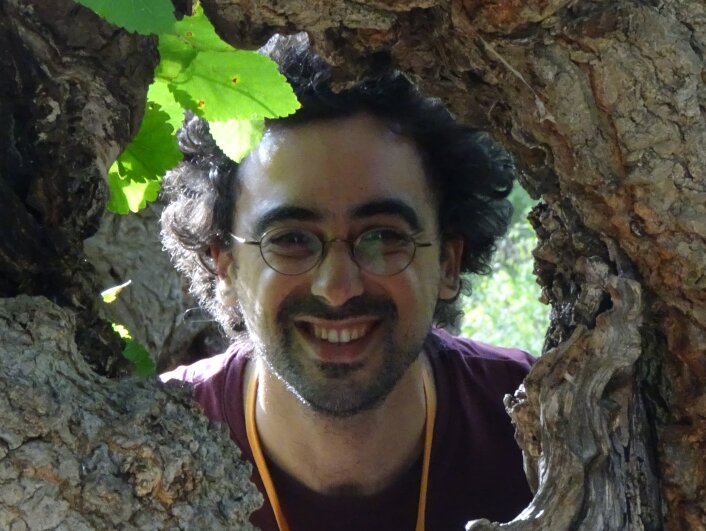AMAP Agenda
Répétition soutenance thèse Juliette
Les forêts tropicales sont menacées par les changements globaux, entraînant notamment leur dégradation. Un type de forêt peu connu mais largement répandu en Afrique centrale, les forêts à Marantaceae, présente un aspect dégradé en raison de sa canopée ouverte et d'un manque de régénération des arbres dû au sous-bois dominé par des ... [Lire la suite...]
PS 2 salle 201 + visioconferenceGeoPl@ntNet
Rémi PALARD Pierre BONNETLes forêts tropicales sont menacées par les changements globaux, entraînant notamment leur dégradation. Un type de forêt peu connu mais largement répandu en Afrique centrale, les forêts à Marantaceae, présente un aspect dégradé en raison de sa canopée ouverte et d'un manque de régénération des arbres dû au sous-bois dominé par des ... [read more...]
PS 2 salle 201Dynamique de la végétation et des écosystèmes de forêts-savanes d'Afrique centrale ; collaborations et synergies futures
Pierre COUTERON Gaëlle VIENNOIS Juliette PICARD David BAUMAN SUBKE Jens Arne ABERNETHY Katharine ASCOUGH Philippa EVOUNA ONDO Fidele LEBRUN JohanneLes forêts tropicales sont menacées par les changements globaux, entraînant notamment leur dégradation. Un type de forêt peu connu mais largement répandu en Afrique centrale, les forêts à Marantaceae, présente un aspect dégradé en raison de sa canopée ouverte et d'un manque de régénération des arbres dû au sous-bois dominé par des ... [read more...]
PS 2 salle 201Plant fossil-informed ecosystem modeling is a testing ground for hypotheses regarding deep time terrestrial surface processes
MATTHAEUS William
Les forêts tropicales sont menacées par les changements globaux, entraînant notamment leur dégradation. Un type de forêt peu connu mais largement répandu en Afrique centrale, les forêts à Marantaceae, présente un aspect dégradé en raison de sa canopée ouverte et d'un manque de régénération des arbres dû au sous-bois dominé par des ... [read more...]
PS 2 salle 201Adaptation of trees to Mammalian herbivory and fire: implications for the structure and functioning of temperate zone ecosystems
CHURSKI Marcin
Les forêts tropicales sont menacées par les changements globaux, entraînant notamment leur dégradation. Un type de forêt peu connu mais largement répandu en Afrique centrale, les forêts à Marantaceae, présente un aspect dégradé en raison de sa canopée ouverte et d'un manque de régénération des arbres dû au sous-bois dominé par des ... [read more...]
PS 2 salle 201Zero-inflated binary tree Pólya-splitting distrubtions for joint species distribution models
MORTIER Frédéric
Les forêts tropicales sont menacées par les changements globaux, entraînant notamment leur dégradation. Un type de forêt peu connu mais largement répandu en Afrique centrale, les forêts à Marantaceae, présente un aspect dégradé en raison de sa canopée ouverte et d'un manque de régénération des arbres dû au sous-bois dominé par des ... [read more...]
PS 2 salle 201



